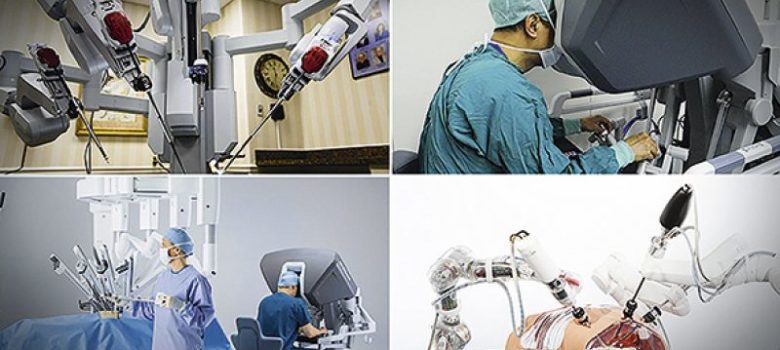

Robots and Spine Surgery
by Guest Author
The use of robots by spine surgeons as precise tools during delicate procedures is on the rise with benefits similar to those of minimally invasive surgery. Robot-guided spinal surgery helps patients by containing tissue disruption and reducing recovery time.

Jean-Philippe Langevin, MD, is a fellowship-trained neurosurgeon who practices at Pacific Neuroscience Institute in Santa Monica, and Torrance, Calif., and who is chief of neurosurgery at Greater Los Angeles Veteran Affairs Healthcare System. He specializes in the surgical treatment of spine conditions, movement disorders, epilepsy and psychiatric conditions.
As the use of robotics in spine surgery continues to develop and become more refined in the future, Dr. Langevin believes that these technological improvements will result in improved overall patient experience and outcomes.
Here are Dr. Langevin’s ideas about how robotics use in spine surgery will develop in the future.
Minimalistic design with reduced OR footprint and improved workflow
Future robots will be less bulky and will ideally just replace other instruments in the operating room (OR) such as a drill guide or tubular retractor holder.
Easier integration in the OR
With improved software capabilities, the activation of the robot should become simpler. We have seen, for example, newer robots allowing fluoroscopy to CT match for registration. In this view, robotic spine surgery is simply the evolution of image-guidance spine surgery. Furthermore, with the evolution of intraoperative imaging, I expect that CT will eventually replace fluoroscopy therefore allowing for automatic registration in most cases.
Development of preoperative planning software
Robotic surgery allows surgeons to plan the entire surgery. Currently, pedicular screw placement can be pre-planned, but in the future laminectomy and bone resection could be planned and carried out by robotic drills.
Spine surgery of the future
With further development of the technology, robotic integration and image guidance will become ubiquitous in spine surgery. Most instruments used will eventually possess robotic attachments with an emphasis on preoperative planning and less reliance on freehand surgery.
For more information, visit Spine Care at Pacific Neuroscience Institute or call us at 424-212-5361.
Adapted from original article published by Becker’s Spine Review, August 5, 2019. Header image courtesy Spinal Surgery News.
Last updated: April 24th, 2020